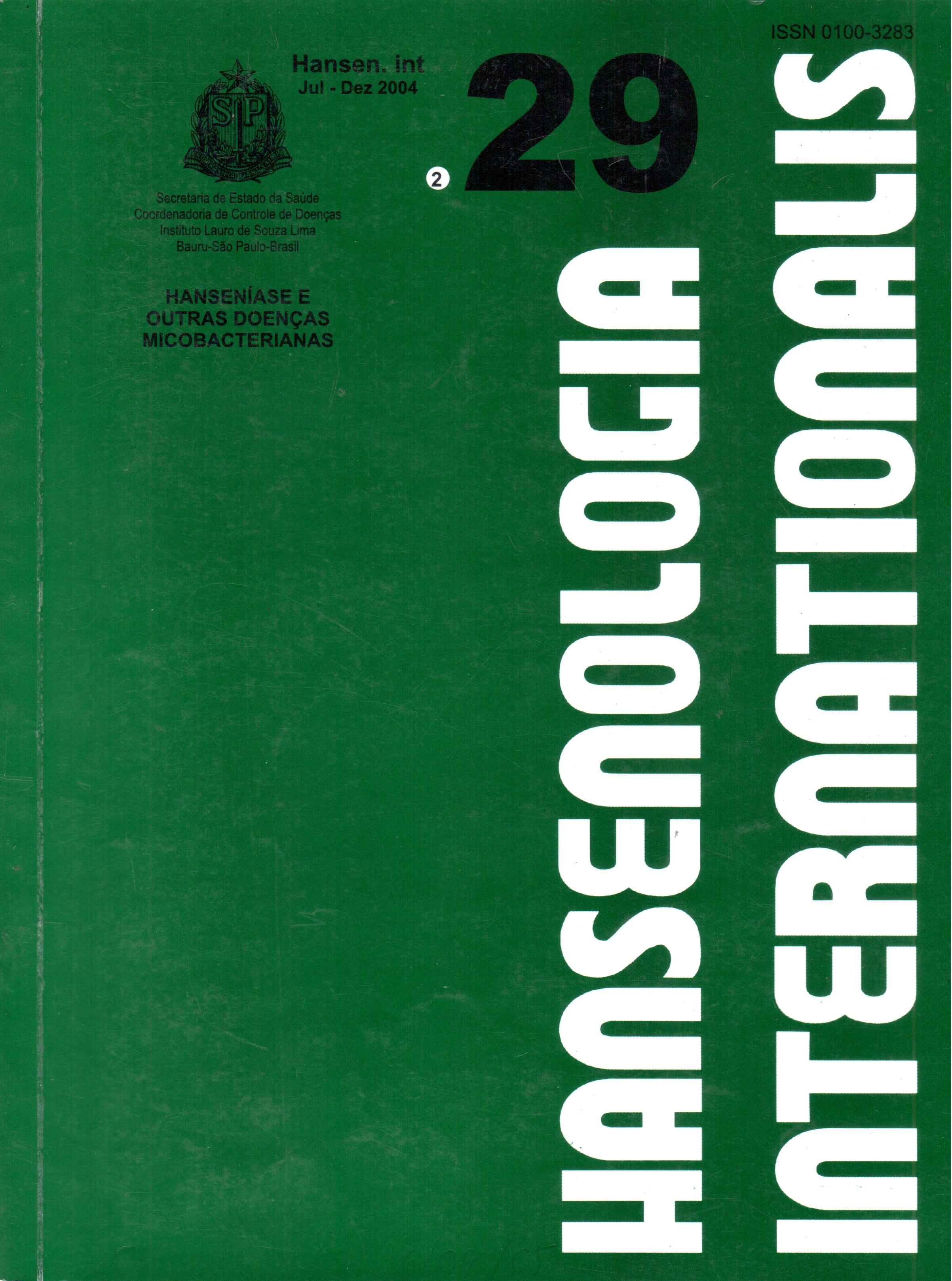Abstract
A total of 33 patients, 28 males and five females, from nine to 87 years of age, wi th suspec ted leprosy associated peripheral neuropathy, without detectable skin lesion or positive skin bacilloscopy, were studied during the period of 1994 to 2004. Patients were s u bmi t t e d t o d e rma t o l o g i c a l a n d n e u r o l o g i c a l examination, electrophysiologic tests, Mitsuda reaction and nerve biopsy. Samples for histopathological exams
were stained with hematoxillin-eosin, Faraco-Fite and immunohistochemistry with anti -BCG antibodies. Among patients with suspected leprosy, the clinical presentation of polyneuropathy occurred in 17 (51.51%) patients while 13 (39.39%) presented mononeuropathy mu l t ip l ex an d 3 ( 9 .1%) mo n o n e ur op a t hy . T h e hematoxillin-eosin and Faraco-Fite stainings confirmed the leprosy diagnosis in 10 (30.30%) patients. Three patients presented a borderline pattern, two tuberculoidpattern and no characteristic histological pattern was observed in the remaining five patients. The final classification depended on the clinical-histological correlation. Immunohistochemistry increased the diagnosis to 11 (33.33%) cases. Among the remaining 22 patients, three patients had leprosy confirmed increasing the diagnosis to 14 (42.43%) cases. One was clinically
understood as a primarily neural leprosy, probably tuberculoid form of the childhood. From the remaining patients, 19 (57.57%) were excluded during the follow-up. The primarily neural leprosy (PNL) is an unusual leprosy presentation and a complex form to diagnose. The clinical follow-up accompanied by the improvement of histopathological examination of the nerve may add more accuracy to the investigation of the suspected leprosy neuropathies.
References
2 Kaur G, Girdhar BK, Girdhar A, Malaviya GN, Mukerjee A, Sengupta U, Desikan KV. A clinical, immunological and histological study of neuritic leprosy patients. Int j lepr 1991; 590):385-391.
3 Brake! WHV. Peripheral neuropathy in leprosy: The Continuing Challenge [thesis]. Utrechy: Universiteit Utrecht, Faculteit Geneeskunde; 1994.
4 Garbino JA. Manejo clinico das diferentes formas de comprometimento da neuropatia hanseniana. Hansen int 1998; (n° especial):93-99.
5 Nogueira LA. A case of isolated tuberculoid leprosy of brachial cutaneous nerve. Acta leprol 1990; 7(2):153-5.
6 Desikan KV, Anbalagan J, Maheshwarl PK. Pure neuritic leprosy of supraorbital nerve as unusual presentation. Indian j lepr 2001; 73(4):359-60.
7 Theuvenet WI, Finlay K, Roche P. Neuritis of the lateral cutaneous nerve In leprosy. Int j lepr 1993; 61(41:592-6.
8 Lehman LF, Orsini MBP, Nicholl ARJ. The development and adaptation of the Semmes-Weinstein monofilaments in Brazil. 1 hand ther 1993; 6:290-9.
9 Prince K Von, Butler B. Measuring sensory function of the hand In peripheral nerve injuries. Am j occup ther 1967; 21:385-395.
10 Falk B, Stalberg E, Bischoff C. Sensory nerve conduction studies with surface electrodes. Methods Clinical Neurophysiology 1994; 5(1): 1-20.
11 Lowy L. Processing of biopsies for leprosy bacilli) med lab technol; 1956; 13:558.
12 Narayanan RB, Girdhar BK, Malaviya GN, Sengupta U. In situ demonstration of mycobacterium leprae In leprosy lesions using monoclonal antibodies. Immunol lett 1990; 24:179-184.
13 Pagliari C, Duarte MIS, Sotto MN. Pattern of mycobacterial antigen detection In leprosy. Rev Inst Med Trop, São Paulo 1995; 37(11:7-12.
14 Lima LS, Campos NS. Diagnóstico da forma nervosa macular tuberculóide: tuberculóide minor, tuberculóide major, tuberculóide da infância. Rio de janeiro: Serviço Nacional de Lepra; 1944. p.117-132.
15 Mendes, ]P. Contribuição ao estudo das lesões nodulares da lepra tuberculóide infantil [tese]. Porto Alegre: Universidade de Porto Alegre. Faculdade de Medicina; 1956.
16 Singh G, Dash K, Grover S, Sangolll P. Skin patches heralding relapse In a treated case of neuritic leprosy. Lepr rev 1998; 64(41:400-1.
17 Ishida Y, PecorIni L, GugIleImeIIl E. Three cases of pure neuritic (PN) leprosy at detection In which skin lesions became visible during their course. Nihon Hansenbyo Gakkai Zasshl 2000; 69(21:101-6.
18 Petro TS. Neuritic leprosy - less common or we do not see B7 Indian j lepr 1998; 70(3):323.

This work is licensed under a Creative Commons Attribution 4.0 International License.
